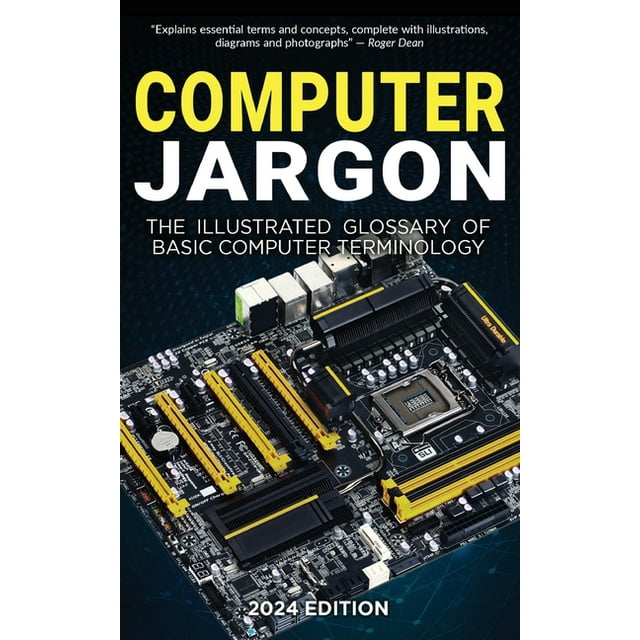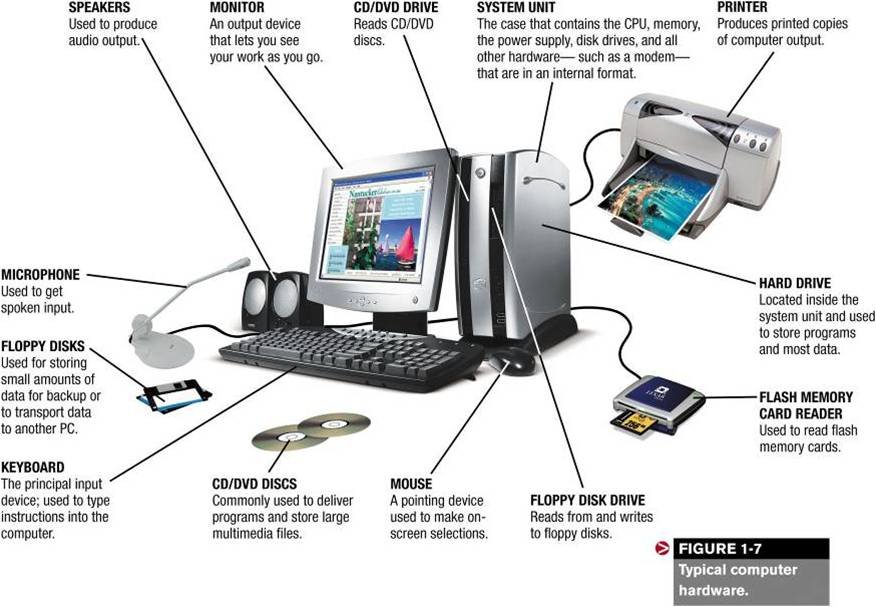In today's digital age, understanding computer jargon is essential for anyone looking to navigate the vast world of technology. Whether you're a beginner or someone who wants to expand their knowledge, having a solid grasp of basic computer terminology can help you communicate more effectively and make informed decisions. This article aims to provide a comprehensive and easy-to-understand glossary of common computer terms, complete with illustrations and practical examples.
Technology has become an integral part of our daily lives, influencing how we work, learn, and interact. However, the abundance of technical terms and abbreviations can sometimes feel overwhelming. This guide will demystify computer jargon, making it accessible to everyone, regardless of their technical background.
By the end of this article, you'll have a clear understanding of fundamental computer terms and how they apply in real-world scenarios. So, whether you're troubleshooting your device, exploring new software, or simply curious about how computers work, this illustrated glossary is here to assist you every step of the way.
Read also:2nd Largest Hospital In The World Exploring Its Size Services And Impact
Table of Contents
- Introduction to Computer Jargon
- Basic Computer Terminology
- Networking Concepts
- Internet-Related Terms
- Data Storage and Management
- Security and Privacy
- Programming Basics
- Artificial Intelligence and Machine Learning
- Illustrated Examples
- Conclusion and Next Steps
Introduction to Computer Jargon
Computer jargon refers to the specialized language used in the field of computing. It includes a wide range of terms, abbreviations, and concepts that can often seem confusing to those unfamiliar with technology. Understanding this jargon is crucial for anyone who wants to engage with computers on a deeper level.
From basic components like the CPU (Central Processing Unit) to complex ideas like AI (Artificial Intelligence), computer terminology spans a vast spectrum. This section will introduce you to the importance of learning computer jargon and how it can enhance your technological literacy.
Additionally, we'll explore how computer jargon evolves over time, adapting to new advancements and innovations in the tech industry. By staying informed about the latest terms and trends, you can remain up-to-date with the rapidly changing world of technology.
Basic Computer Terminology
Before diving into more advanced concepts, it's essential to familiarize yourself with the foundational terms of computer science. These terms form the backbone of all computer-related discussions and are critical for building a strong understanding of how computers function.
Hardware Terminology
Hardware refers to the physical components of a computer system. Below are some key terms related to hardware:
- Processor (CPU): The brain of the computer that performs calculations and executes instructions.
- RAM (Random Access Memory): Temporary storage that allows the computer to access data quickly.
- Hard Drive: A storage device where data is stored permanently.
- Graphics Card (GPU): A component responsible for rendering images, video, and animations.
Understanding hardware terminology is vital for anyone looking to optimize their computer's performance or troubleshoot hardware-related issues.
Read also:Unlocking The Power Of 720p Everything You Need To Know
Software Terminology
Software, on the other hand, refers to the programs and applications that run on a computer. Some common software terms include:
- Operating System (OS): The core software that manages hardware resources and provides common services for applications.
- Application Software: Programs designed to perform specific tasks, such as word processors or web browsers.
- Driver: Software that enables communication between the operating system and hardware components.
By grasping these software-related terms, you'll be better equipped to navigate the digital landscape and choose the right tools for your needs.
Networking Concepts
Networking is another critical area of computer jargon that deals with connecting computers and devices to share resources and information. Below are some fundamental networking terms:
- LAN (Local Area Network): A network that connects devices within a limited area, such as a home or office.
- WAN (Wide Area Network): A network that spans a larger geographical area, often connecting multiple LANs.
- Router: A device that directs data traffic between networks, ensuring efficient communication.
Understanding networking concepts is essential for setting up and maintaining secure and efficient connections between devices.
Internet-Related Terms
The internet has revolutionized the way we access information and communicate with others. Below are some key terms associated with the internet:
- IP Address: A unique identifier assigned to each device connected to a network.
- Domain Name: A human-readable address that maps to an IP address, making it easier to access websites.
- Bandwidth: The maximum amount of data that can be transmitted over a network in a given time.
By familiarizing yourself with these internet-related terms, you'll gain a deeper understanding of how online communication and data transfer work.
Data Storage and Management
Data storage and management are crucial aspects of computer technology. Below are some important terms in this field:
Cloud Computing
Cloud computing refers to the delivery of computing services over the internet. Some key terms include:
- Public Cloud: A cloud environment open to the public, often provided by third-party providers.
- Private Cloud: A cloud environment dedicated to a single organization, ensuring enhanced security and control.
Cloud computing offers numerous benefits, such as scalability, flexibility, and cost-effectiveness.
Backup and Recovery
Backup and recovery involve safeguarding data against loss or corruption. Some relevant terms include:
- Backup: The process of copying data to ensure it can be restored in case of loss or damage.
- Recovery Point Objective (RPO): The maximum acceptable amount of data loss measured in time.
Implementing effective backup and recovery strategies is essential for protecting valuable data and ensuring business continuity.
Security and Privacy
Security and privacy are critical concerns in the digital age. Below are some important terms related to cybersecurity:
- Encryption: The process of converting data into a coded format to prevent unauthorized access.
- Firewall: A security system that monitors and controls incoming and outgoing network traffic.
- Phishing: A fraudulent attempt to obtain sensitive information by pretending to be a trustworthy entity.
By understanding these security-related terms, you can take proactive steps to protect your data and maintain your privacy online.
Programming Basics
Programming is the process of creating instructions for computers to execute. Below are some foundational programming terms:
- Algorithm: A step-by-step procedure for solving a problem or performing a task.
- Variable: A storage location in a program that holds a value which can be changed during execution.
- Loop: A programming construct that allows a set of instructions to be repeated multiple times.
Learning programming basics can open up a world of possibilities, enabling you to develop software, automate tasks, and solve complex problems.
Artificial Intelligence and Machine Learning
Artificial Intelligence (AI) and Machine Learning (ML) are cutting-edge fields that involve creating systems capable of performing tasks that typically require human intelligence. Some key terms include:
- Neural Network: A computational model inspired by the human brain, used for recognizing patterns and making predictions.
- Supervised Learning: A type of machine learning where the model is trained on labeled data to make accurate predictions.
- Deep Learning: A subset of machine learning that uses neural networks with multiple layers to analyze complex data.
AI and ML are transforming industries across the globe, from healthcare to finance, and understanding their terminology is essential for staying ahead of the curve.
Illustrated Examples
To help solidify your understanding of computer jargon, we've included several illustrated examples throughout this article. These visuals provide a clear and engaging way to grasp complex concepts and see how they apply in real-world scenarios.
For instance, diagrams of computer hardware components, flowcharts of programming logic, and infographics of networking architectures will enhance your comprehension of the material. By combining textual explanations with visual aids, this guide aims to cater to various learning styles and preferences.
Conclusion and Next Steps
In conclusion, understanding computer jargon is an invaluable skill in today's technology-driven world. By familiarizing yourself with the terms and concepts covered in this article, you've taken a significant step toward enhancing your technological literacy.
We encourage you to continue exploring the world of computers and technology. Consider delving deeper into specific areas that interest you, such as programming, cybersecurity, or artificial intelligence. Additionally, don't hesitate to share this article with others who may benefit from it or leave a comment below sharing your thoughts and experiences.
Thank you for reading, and we hope this illustrated glossary of basic computer terminology has been both informative and enjoyable. Stay curious, keep learning, and embrace the endless possibilities of the digital age!

